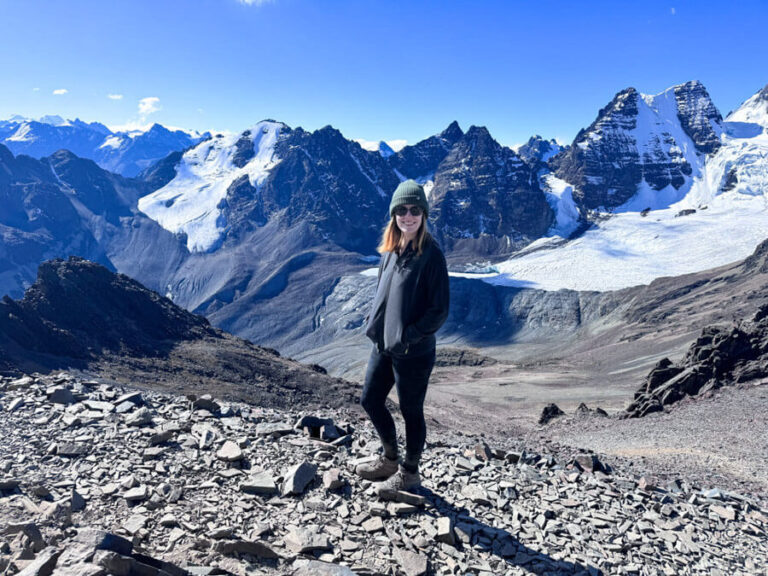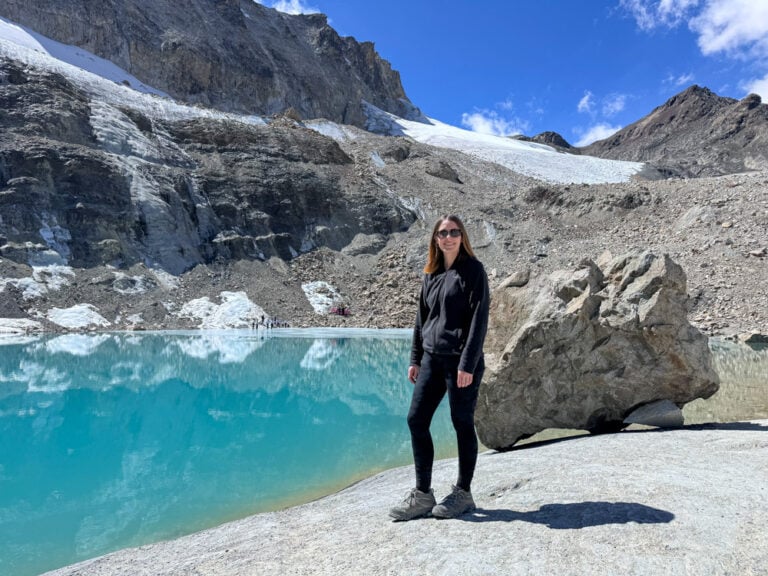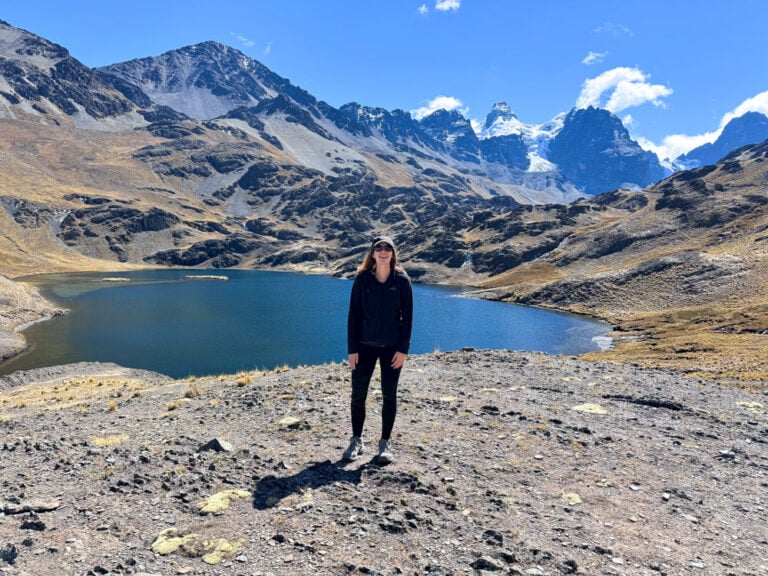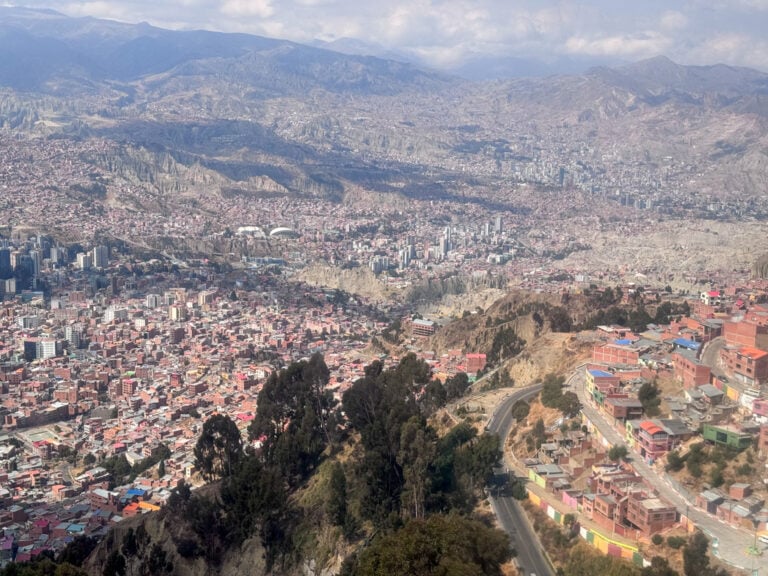20 Absolute Best Things to Do in Bolivia (2026)

Ah, Bolivia! One of my all-time favourite countries. Mostly known for being home to the world’s largest salt flats, this small but mighty country has so, so much more to offer. With world-class hikes, other-worldly landscapes, incredible natural beauty, the Amazon Rainforest, diverse cities, exciting outdoor activities, and archaeological sites filled with unique history, a trip to Bolivia promises to be one to remember.
I’ve already shared my favourite places to visit in the country, but in this post, I’ve shared the BEST things to do in Bolivia to help you finalise your itinerary.
I was lucky enough to spend an entire month exploring Bolivia on my solo trip, but that still didn’t feel like long enough. I can’t wait to go back one day and finish everything I didn’t get to do. But in the meantime, I hope this post helps you to plan your dream trip.
Cross the epic Salar de Uyuni and go stargazing
The Uyuni Salt Flats (or Salar de Uyuni) is Bolivia’s top tourist attraction and arguably what put Bolivia on the backpacking map.
This is the world’s largest salt flat and an absolutely unmissable activity for anyone visiting Bolivia. Most guided tours spend three days crossing the other-worldly landscape, including stops at various colourful lagoons and even hot springs.
The Salt Flats themselves are absolutely mesmerising. Stretching as far as the eye can see, it’s a once-in-a-lifetime experience as you ride across the salt flats.
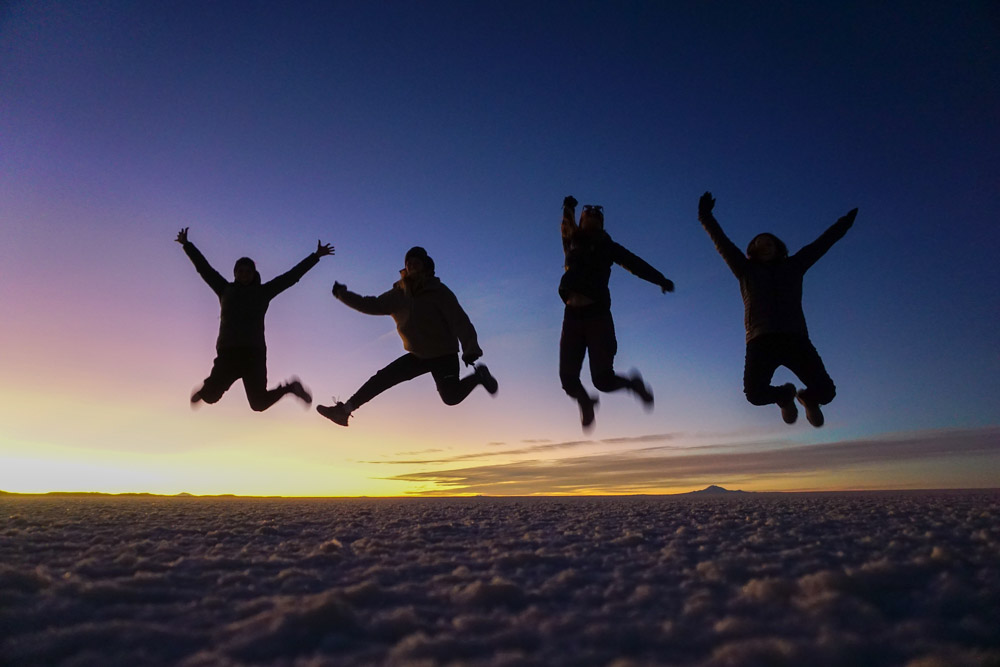
Salar de Uyuni is also known for the incredible stargazing during the winter months/the dry season (May to September). With almost guaranteed clear skies and minimal light pollution, the stargazing here can be some of the best in the world.
The best way to explore the Salt Flats is to join a three or four-day tour from Uyuni or Tupiza. These tours take you much deeper into the Andes and across unbelievable landscapes like nowhere else in the world. It’s also possible to do day trips to the flats from Uyuni.
Most people begin their tours from the town of Uyuni, but I’d suggest starting from Tupiza instead. The tours from here are a day longer and offer a more diverse range of landscapes. It’s perfect if you’re crossing into Bolivia from Argentina. For those entering Bolivia from Chile and the Atacama Desert, you can also start your Salt Flat tours from San Pedro de Atacama. Just be aware that the tours from here are a little bit more expensive.
Most people argue that the best time to visit the Uyuni Salt Flats is during the summer months (December to March). During the summer, heavy rain creates a layer of water on top of the salt, creating a magical reflection effect known as the world’s largest natural mirror.
Although seeing the reflections is a wonderful experience, I would personally argue that visiting Salar de Uyuni in the winter has more benefits. While you don’t get the reflection effect, you do get to see more of the area. Spots such as the beautiful Inchauasi Island are fully accessible (this often can’t be accessed during the summer), and the stargazing is phenomenal.
Whenever you decide to visit, visiting the Salt Flats is undoubtedly one of the BEST things to do in Bolivia.

Cycle the famous Death Road
Want to cycle along the ‘World’s Most Dangerous Road’? Well, in Bolivia, you can! The Yungas Road is a 40-mile (64 km) long stretch of road connecting La Paz to the lowland valleys. This steep road is known for its narrow width, sheer drops and nailbiting turns that have claimed many lives over the years. For those who dare, there is the chance to mountain bike down the terrifying road.
Although once an important road for traffic, it’s now mostly a tourist attraction with minimal cars and lorries. This means cycling down Death Road is much safer than it used to be but still comes with risks. In the last few years, the road has claimed several lives, including tourists who were cycling.
That being said, this is still one of the most popular activities in Bolivia, and the number of injuries compared to the number of people who do it daily is very low.
Just make sure to choose a reputable company with an impeccable safety record. I heard stories of broken bikes with brakes that weren’t working, which is not what you want when speeding down a narrow cliff.
This tour is very highly rated.
Admire flamingoes at Laguna Colorada
It’s possible to visit Salar de Uyuni as a day trip from Uyuni, but if you can, it’s well worth doing a multi-day trip. While the world’s largest salt flat is the star of the show, there is so much more to see in the area, including Laguna Colorada.
The lagoon lies in the Andes Mountains, 4,278 metres (14,035 feet) above sea level. Thanks to red algae and various sediments, it is a vibrant pink colour and attracts thousands of flamingoes. You know those postcard-worthy photos of flamingoes eating in a pink lagoon with stunning mountains in the background? This is it.
Most 3-day tours of Salar de Uyuni will include a stop here, providing it’s accessible (sometimes the area can flood). There is a short walk along the edge of the lagoon and a fantastic viewing platform.
This huge salt lake is one of Bolivia’s most beautiful natural wonders and an absolute must-visit for anyone in the area.

Try mountaineering at Huayna Potosí
Have you ever wanted to try mountaineering but have always been too scared? Well, Huayna Potosi may be the answer! The peak of this giant mountain lies at 6,088 metres (19,974 feet) above sea level and is known to be one of the best mountains in the world for beginner mountaineers.
Despite its popularity amongst travellers, it’s certainly not something to take lightly. The climb involves glacier walking, using a pique axe and even walking along a ridge of ice. If you can overcome the technical challenge, you still have to deal with the effects of the high altitude.
Most tours take place over three days/two nights. The first day is spent learning all the necessary technical skills with the chance to climb an ice wall. On day two, you’ll trek up to Basecamp for a brief sleep before attempting to reach the summit for sunrise.
Sadly, I opted against this. It was a mix of feeling unwell and a lack of time to build myself up to the challenge. I also suffered bad altitude sickness on my Pico Austria trek, which made me a little nervous to go any higher.
I met some backpackers who said Huayna Potosi was easy and others who said it was terrifying! But, the one thing they could all agree on was how amazing the hike was. If you do decide to take on one of Bolivia’s best hikes, make sure to go with a well-reviewed company.
Visit a Witches Market in La Paz
No trip to La Paz is complete without a visit to the famous Witches Market. Known by locals as El Mercado de las Brujas, this spooky market is a fascinating place to learn more about Bolivian traditions.
At the market, you’ll find all sorts of unusual potions – from a potion to help you fall in love to one to help bring you good fortune. They seem to have something for everything and everyone. However, that’s not all the market has to offer. One of the most common items to find at the market is animal fetuses – especially llamas. While it might sound upsetting, these fetuses are an important part of Bolivian tradition. They are buried in the foundations of any new building as an offering to Mother Earth or Pacha Mama.
The main Witches Market is in the centre of La Paz, a couple of blocks from Plaza Mayor de San Francisco. I visited as part of a free walking tour with Red Cap Walking Tours. The market has become more of a tourist attraction than anything else, but it’s still well worth a stop.
Red Cap Tours also offers a tour to El Alto Market which has a more traditional Witches Market.


Search for wildlife in the Amazon Rainforest
The Amazon is the world’s largest rainforest and spans a whopping nine countries across South America, including Brazil, Peru, Colombia, Ecuador and Bolivia. Although many consider Brazil the only place to explore the Amazon Rainforest, Bolivia is actually a fantastic option (and one of the cheapest).
Mostly known for the famous Salt Flats and Andes Mountains, it might come as a surprise to some that Bolivia is one of the best countries to visit the Amazon. Home to pink dolphins, the elusive jaguar and giant anteaters, wildlife spotting in the Bolivian Amazon is an incredible experience and an absolute must for any Bolivian itinerary.
Most tours into the Bolivian Amazon begin in Rurrenabaque, a town on the edge of the Amazon. From here, you can visit both the Pampas and the Madidi National Park areas of the rainforest. However, there are some ethical issues surrounding tours that take place here. From handling the wildlife to chasing the dolphins, some tour operators do not follow ethical wildlife viewing rules. Of course, this isn’t the case for every tour, so I’d highly suggest verifying your tour operator in advance.
The other option is to stay at Chuchini Lodge in the Trinidad area of Bolivia. The Lodge owns a giant reserve area offering protection and even rehabilitation for wildlife.

I’ve spoken more about this in my post about the best places to visit in Bolivia and don’t miss my helpful packing list for the Amazon.
Explore Lake Titicaca and Isla del Sol
Isla del Sol was one of my favourite places in Bolivia. This beautiful island lies in Lake Titicaca, the world’s highest navigable lake (Over 3,800 metres above sea level). The island is significant in Inca history, and it’s believed to have been the birthplace of Inti, the Inca Sun God.
Pro tip: For those also visiting Peru and looking to explore the Peruvian side of Lake Titicaca, I highly recommend prioritising the Bolivian side. Isla del Sol is so peaceful and beautiful compared to Uros which is suffering from overtourism.
I’d suggest spending at least two nights on Isla del Sol. This will give you time to hike around the island, explore the Inca ruins and watch a sunrise or sunset (something the island is famous for). The hike around the island was one of my favourites in Bolivia.
For those who don’t have time to spend any nights on the island, it’s still possible to visit as a day trip from the nearby town of Copacabana (or even La Paz for those tight on time). You won’t have time to hike the full island, but you can visit the Inca sites and make the most of the stunning views.
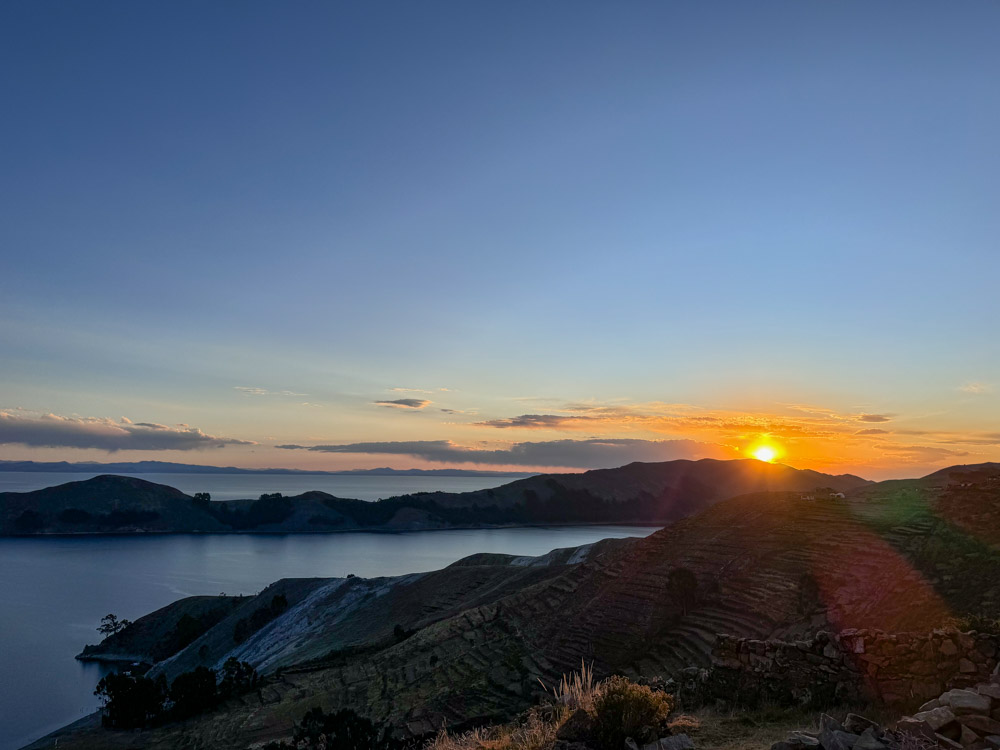
Go horseriding in Tupiza
Known as Bolivia’s Wild West, the small but lively town of Tupiza is an absolute must-visit on any trip to Bolivia. Surrounded by incredible red rock scenery, Tupiza is an outdoor lover’s dream, with endless hikes and trails to explore.
One of the best ways to experience the surrounding landscape is to go horseback riding. The tours range from a few hours to even a few days and take you to some of the most epic spots.
If you’re a solo traveller, I highly recommend opting for a horseback ride rather than going on a solo hike. As much as I encourage solo travel, the trails around Tupiza are known to have a pack of wild dogs that have previously attacked people. Plus, the horse riding is one of my favourite memories from Bolivia.
I opted to go with La Torre Tours for one of their short morning rides. We were on the trails for around two hours before returning to the farm. I’m always cautious about anything involving animals, but the horses looked well cared for.
Side note: Tupiza is also a great spot to begin your tour of Salar de Uyuni. The tours from here are normally 4 days and involve an extra day of exploring the unique red rock landscape the area is known for.
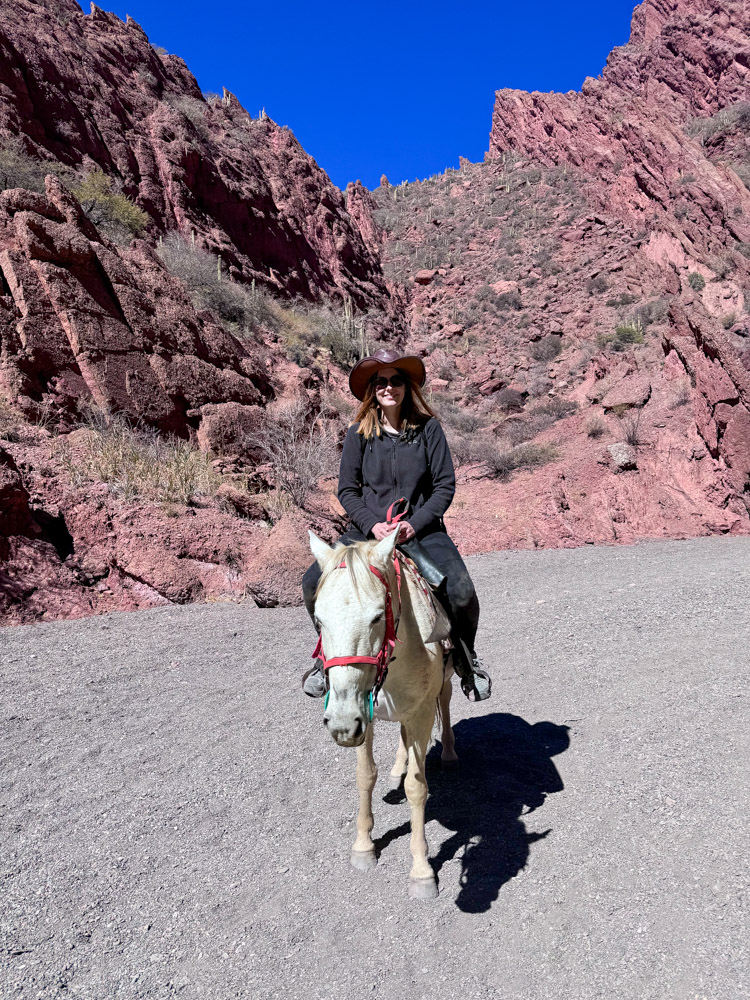
Ride the world-famous Mi Teleferico
La Paz is known as the world’s highest city, but it’s also famous for its unique public transport system – a cable car network known as Mi Teleferico.
This giant cable car system has ten lines that connect the city of La Paz. It’s how the locals get around, and it’s a great (and affordable) way to avoid the bad traffic and see the city from above.
I spent a whole morning exploring Mi Teleferico and riding around the city. I’d suggest starting on the Blue Line before changing to the Yellow to reach the Qhana Pata viewpoint. The views from here were incredible, and it really shows the scale of the city.
You can also use Mi Teleferico to reach El Alto, home to one of Bolivia’s most famous markets. The cable cars are generally clean and safe to use, but it’s important to exercise some caution. I wouldn’t recommend using it alone at night, and be sure to keep your belongings close to you.
As of 2024, a single ride on the Mi Teleferico costs just 3 Bolivianos ($0.40). You can purchase your card at a station and top it up with as much money as you need.
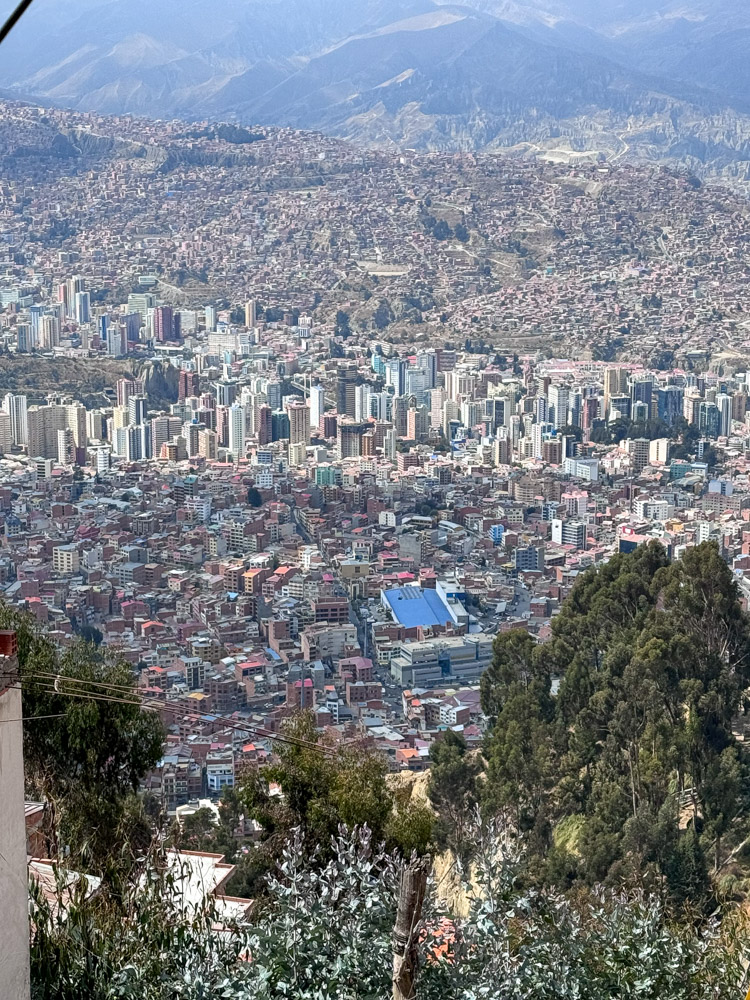

Walk on ‘the moon’ at Valle de La Luna
When talking about the best lunar landscapes in South America, that award normally goes to the Atacama Desert or Salar de Uyuni. However, La Paz also has its own Luna Valley which is just a few miles from the city centre.
Known as one of the best things to do in La Paz, Luna Valley boasts other-worldly rock formations overlooking La Paz. It’s possible to visit independently, or you can join a tour. Most tours also include a stop elsewhere such as Chacaltaya Mountain or even a tour of the Mi Teleferico system.
If you do join a tour, I’d suggest this one which is well-rated. You can also book last-minute in La Paz.
There’s a short walking path around the valley, but you don’t need to spend a long time there. In all honesty, it doesn’t compare to the likes of the Atacama Desert or Salar de Uyuni, but it’s a nice way to fill a morning/afternoon and get out of the chaotic city.
Hike 5,000 metres above sea level for breathtaking views
Hiking probably isn’t the first thing that comes to mind when planning a trip to Bolivia, but the country is actually home to some epic hiking. In fact, one of my favourite hikes of all time is in Bolivia.
There are several hiking destinations in Bolivia, including Torotoro and Sajama, but one of the best bases for hiking is the city of La Paz. From here, there are several single-day and multi-day hikes offering spectacular views of the Andes Mountains.

I’ve already covered Huayna Potosi, but this won’t be for everyone. If you’re like me and love a challenging hike but are not quite ready to climb ice walls, there are a couple of other options. One of the best day hikes from La Paz is Pico Austria. This epic day hike takes you 5,300 metres (17,400 feet) above sea level and rewards hikers with some of the most breathtaking views I have ever witnessed. You’re surrounded by views of turquoise lagoons, incredible glaciers and snow-capped mountains. It’s truly beautiful.
For those looking for a slightly easier hike, consider a day hike to Laguna Esmeralda/Charquini. This takes you to 5,000 metres, but you start from a much higher elevation, and the hike only takes about one hour.
Whichever hike you decide to do, it’s one of the best things to do in Bolivia!
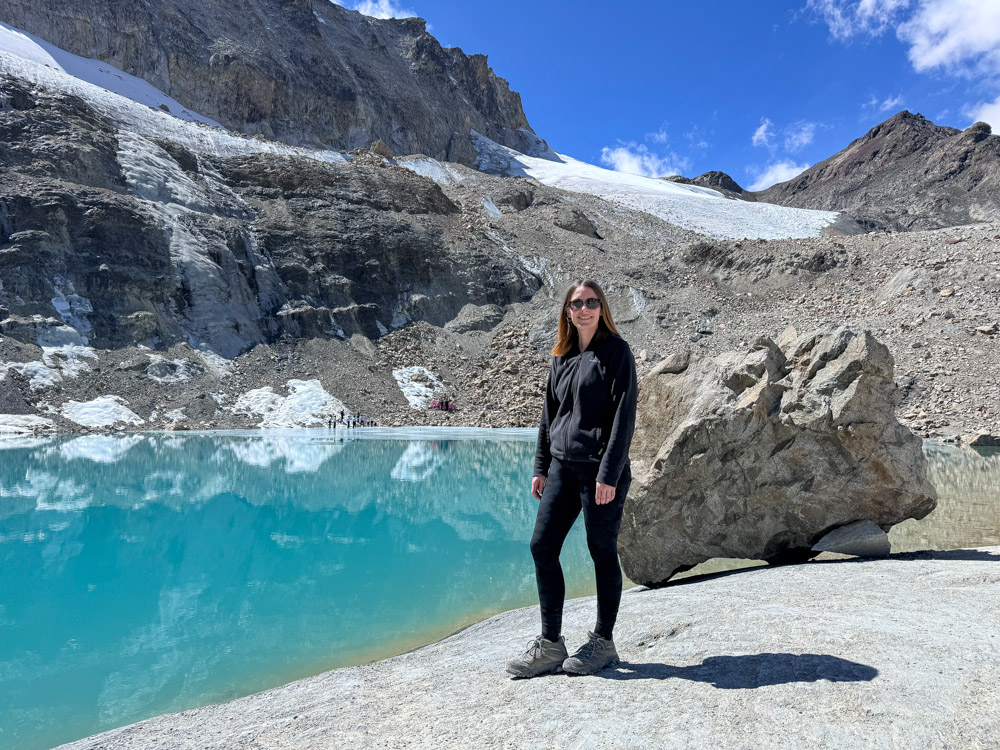
Taste wine in Tarija
The area of Tarija in Bolivia is home to some of the world’s highest vineyards. Here, you’ll find a beautiful wine-growing region which create a unique and delicious Bolivian red wine.
For those keen to try the wine, several of the vineyards offer tours and tasting sessions. The only downside is Tarija is a little off-the-beaten-path, and it can take some time to get to. If you’re in Tupiza or coming from Argentina, Tarija is only a few hours away. However, from Sucre it will take 10 hours and from La Paz it will take 18 hours!
If you do make it to Tarija and want to taste the wine, the best option is to use the Ruta del Vino bus. The tours include transport and several stops and some tastings at various vineyards and distilleries. It’s certainly one of the more unique things to do in Bolivia.
See real-life dinosaur footprints
Bolivia is full of surprises, and I was surprised to learn that it’s home to one of the world’s largest collections of fossilised dinosaur footprints!
There are several places to see dinosaur footprints in Bolivia, but the best is Cal Orck’o in Sucre. This active limestone quarry is home to around 5,000 dinosaur footprints, including some from a baby T-rex. What’s particularly special about this spot is the scale of the dinosaur tracks.
Thanks to a shift in tectonic plates, the dinosaur tracks are now on a vertical cliff. There are several huge footprint tracks side-by-side, and it’s interesting to see how they differ.

If you plan on visiting Torotoro National Park, you can also see dinosaur footprints here. The footprints aren’t quite on the same scale as in Cal Orck’o, but you can stand right next to them which is a fun experience. You’ll also need to hire a guide to enter Torotoro.
Wherever you decide to visit, be sure not to miss seeing the dinosaur footprints in Bolivia. There aren’t many places in the world where you can see them on this scale.

Search for waterfalls in Amboro National Park
Amboro National Park is one of the most bio-diverse areas of Bolivia, and a fantastic place to spend a few days hiking and searching for waterfalls and unique wildlife.
There are two different ways to explore Amboro – from the south or from the north. For those who want to go hiking or search for waterfalls, one of the best options to head to the nearby town of Samaipata. From here, you can enter South Amboro with a guide to hit one of the many trails. Alternatively, you can hike independently to Las Cuevas Waterfalls, three stunning waterfalls and a relatively easy hike.
It’s also possible to visit Amboro from Santa Cruz de La Sierra, one of Bolivia’s major cities. From here, you can enter the north side of the park (although it’s still a bit of a drive) and hit one of the many trails. This side of the park is known to be a little bit more humid with lush green jungle, and plenty of waterfalls and cascade pools.
Just remember you will need to hire a guide to enter the park itself. It’s possible to book tours in both Samaipata and Santa Cruz.
Learn Spanish in Sucre
Sucre is one of my favourite cities in Bolivia (and all of South America). It’s often skipped by many visitors who head straight from La Paz to Uyuni, but this colonial city is really worth your time.
The city is known to be one of the best places in South America to learn Spanish. Many lessons are incredibly affordable, with singular lessons being as little as $7 USD.

Many Spanish schools also offer accommodation packages, so you can find some great value deals. A few of the hostels also offer Spanish lessons.
During my few days in Sucre, I met many backpackers who had chosen to base themselves in Sucre for a while to learn Spanish. The city had a different feel than other cities in Bolivia, and I can’t wait to return. It’s a really great place to base yourself for a few days, or even longer!
Get your history fix in Potosi
Once one of the richest cities in the world and a UNESCO World Heritage site, the town of Potosi is Bolivia’s mining capital and an interesting place to learn about Bolivian history. During the 15th century, mining materials were discovered in the area leading to a booming industry. Sadly, most of the materials were shipped to Spain, leaving the indigenous workers with little money.
While it might not be everyone’s cup of tea, Potosi holds an important part of Bolivian history that can only really be understood by visiting. I’d suggest booking a walking tour through Guru Walk to learn more about the city.
One of the most popular things to do in Potosi is to join a tour of the mines. However, there are a few ethical questions surrounding this. The mines are known for their lack of safety, and the lives of workers are regularly put at risk with low pay in return. Many people argue that the tours only add to this exploitation as the money doesn’t usually end up back with the workers.
I personally skipped the mine tours as I felt very uncomfortable with the idea (both ethically and being in a small space).
Explore Bolivia’s train graveyard
If you’re in Uyuni or crossing the Salt Flats, don’t miss a stop at the famous train graveyard. Here, you’ll find some abandoned rusty old trains which have been deserted in the middle of the salt flats.
The trains were once part of an important railway infrastructure which moved the salt and other minerals and mining materials between Uyuni and Chile. When the mining industry collapsed, many trains were left to turn into rust.
This had been on my list for a while and while it was a little underwhelming, it was still a fun spot which made for some great photos. Most Salar de Uyuni tours should include a stop here.

Watch a Cholitas wrestling match
One of the most unique things to do in Bolivia is watch a Cholitas wrestling match.
The name “Cholitas” refers to the indigenous women of Bolivia from Aymara or Quechua descent. For years, they had been suppressed and were not even allowed to walk freely in the streets of some cities. Thankfully, that has now (mostly) changed and the Cholitas are a sign of resilience and tradition.
The best place to witness a Cholitas wrestling match is in El Alto, La Paz. The shows normally take place on Thursdays and Sundays in the late afternoon. You can book through the fantastic Red Cap Walking tours.
I’m sure it won’t be everyone’s cup of tea, but it’s the only place in the world where you can see it, so it’s certainly an activity to consider.
Hike in Torotoro National Park
Torotoro National Park is one of the lesser-known stops in Bolivia and a great hiking destination. Home to beautiful waterfalls, epic canyons and even dinosaur footprints, exploring Torotoro is a fun stop to include on your trip to Bolivia.
To reach Torotoro, you’ll first need to get to Cochabamba to catch a Colectivo and go to the small town of Torotoro. From here, I’d suggest heading to the park’s main office to see what guides they have available (you need a guide to enter the park).
If you can, spend at least two days exploring the park. A must-do is the Vergel Circuit, which has a great viewpoint known as the Natural Theatre. From here, you can climb down into the canyon to explore a waterfall.
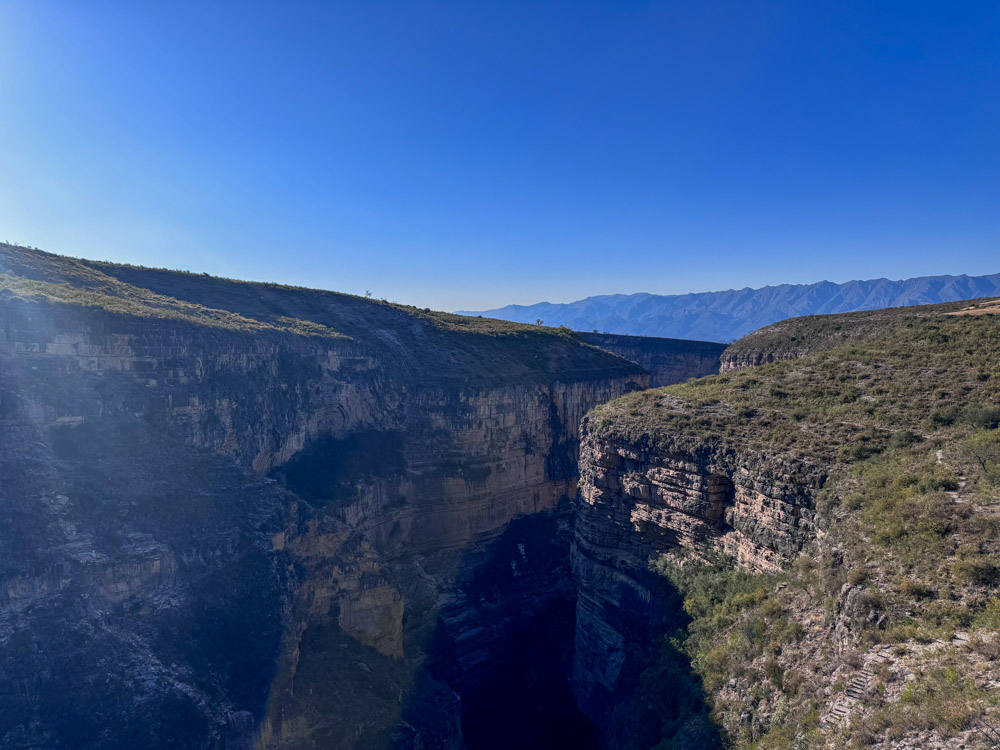
The other popular hike in Torotoro is a ‘rock city’ known as Cuidad De Itas, followed by a trip to some scarily small caves.
Relax in the hot springs at Sajama National Park
The last activity on this list involves relaxing in the hot springs at Sajama National Park, a stunning spot home to Bolivia’s highest peak. And let’s be honest, with all the exploring, hiking, and adventures, including some relaxation on your Bolivia itinerary isn’t a bad idea.
Sajama is home to some of Bolivia’s most epic scenery, and there are several hiking trails to explore. However, the star of the show is the thermal hot springs overlooking the Sajama volcano.
You can visit independently, but getting there can be tough, so I’d recommend joining a group tour from La Paz.
I hope you’ve enjoyed this list of the best things to do in Bolivia. Feel free to save for later or share on social media.

